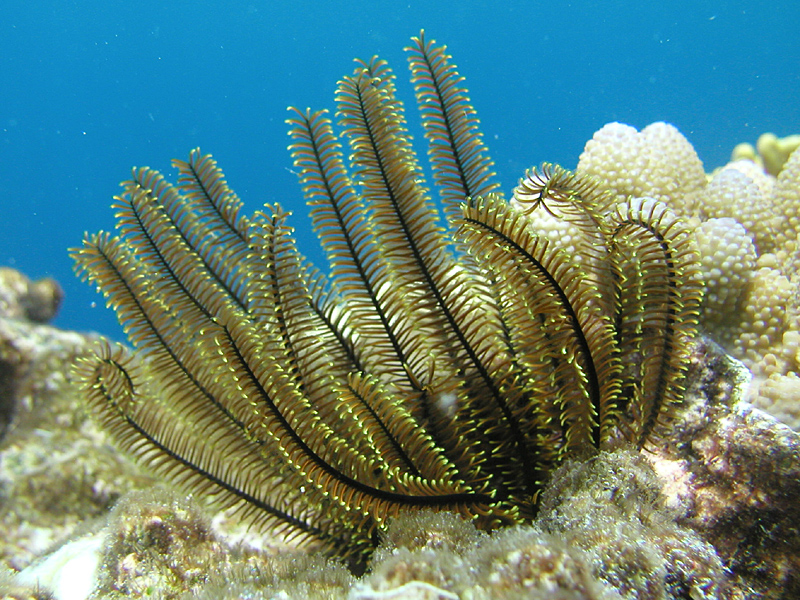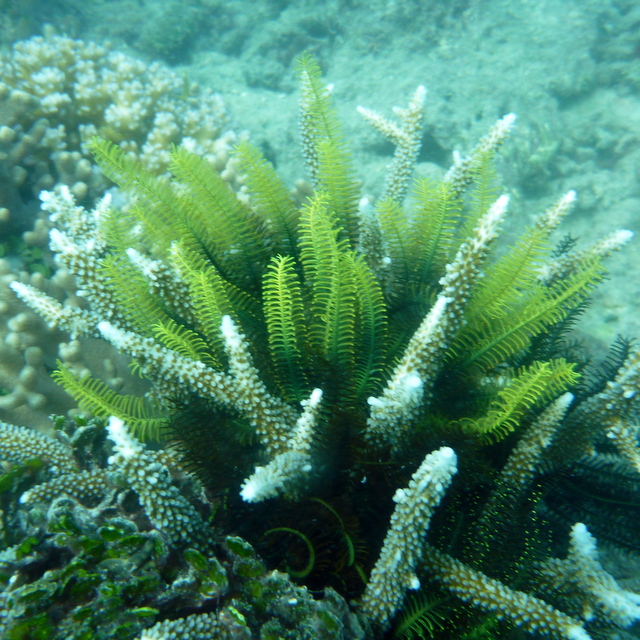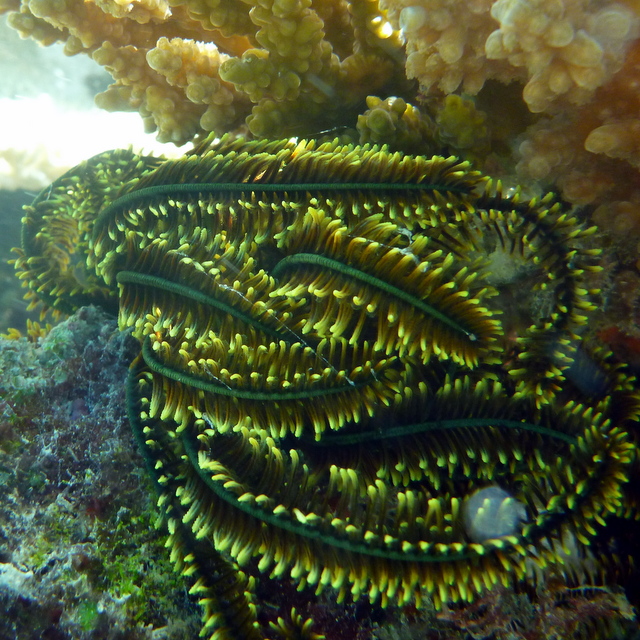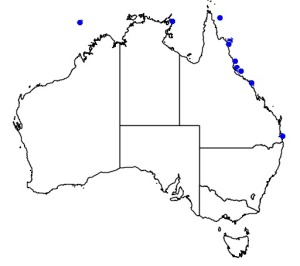Colours
Distinguishing features
Comasterids are distinguised from all other featherstar families by having terminal segments of the oral pinnules modified to form a comb. Comasterids a also have a distinctive "feel" due to well developed hooks on most pinnules that cause them to cling like velcro.
Comaster schlegelii has numerous robust arms and a good ring of cirri.
This species is usually quite brightly coloured although the actual colours vary widely. A common colour combination is green with white, black and orange on arms and pinnules, with orange cirri. Other combinations are green proximally and bright yellow distally, and black with bright orange pinnule tips.
Size
- Size data has not been obtained.
Depth range
- Depth range data is not yet available.
Synonyms
Distribution
Distribution and habitat preferences
Comaster schlegelii is usually found entwined within branching corals.
This species is common throughout the Lizard Island Group and is generally restricted to the water shallower than about 5 m.
Web resources
References
- Clark, A.M. and F.W.E. Rowe (1971). Monograph of shallow-water Indo-west Pacific echinoderms British Museum (Natural History), London.
- Meyer, D.L. (1979). Length and spacing of the tube feet in crinoids (Echinodermata) and their role in suspension-feeding, Marine Biology, 51: 361-369. LIRS catalog number 29.
- Meyer, D.L. (1985). Evolutionary implications of predation on recent comatulid crinoids from the Great Barrier Reef, Paleobiology, 11(2): 154-164. LIRS catalog number 167.
- View all references



